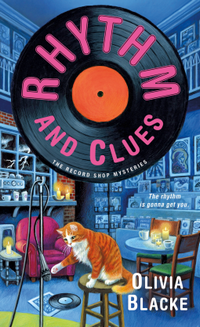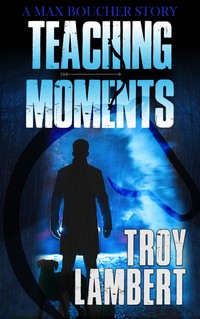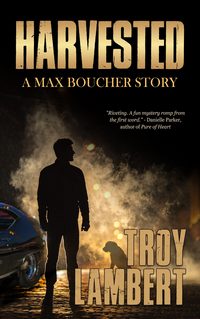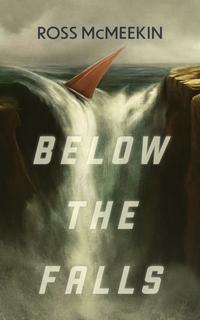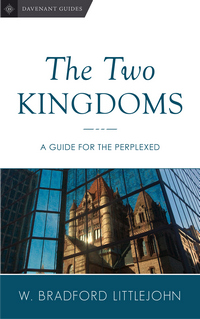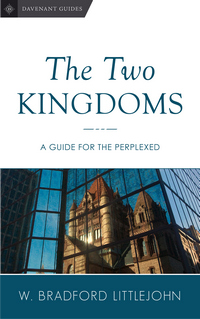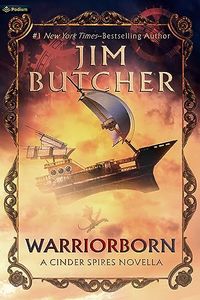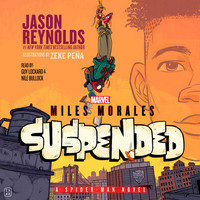When I first posted about this book, I said I couldn’t say much about the art because my ARC didn’t include much of it. Well, the authors fixed that for me, so I’ve augmented that section a little bit.
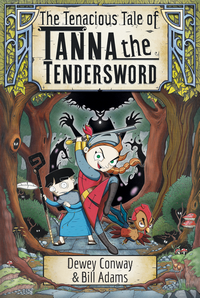 The Tenacious Tale of Tanna the Tendersword
The Tenacious Tale of Tanna the Tendersword
by Dewey Conway & Bill Adams
DETAILS: Series: The Chronicles of Tanna the Champion by Galdifort Quillpen, #1 Publisher: Willow Wraith Press Publication Date: April 2, 2024 Format: eARC Length: 283 pg. Read Date: March 14-18, 2024

What’s The Tenacious Tale of Tanna the Tendersword About?
Tanna is an aspiring Champion, a hero in training, and a student at Edic Academy of Valient Adventurers who is looking for her first quest. It ought to be small, as she’s young and inexperienced, this is the chance to show that she can accept a challenge and complete it successfully, thereby earning the opportunity to further her education.
Traveling with her is a Chronicler-in-training. His duty is to accompany her as she seeks for and then completes her quest, writing the official (and perhaps mildly dramatized) version of her heroics. When/if Tanna becomes a full-fledged Champion, he (or another Chronicler) will accompany her, so someone can tell the tale of her adventures for the entertainment and edification of non-heroes. Galdifort Quillpen is less than appreciative that Tanna’s search for a quest centers on a village populated largely by pigs and pigherders. The sights, smells, and sounds are not what he had in mind.
But she’s not finding a quest, and they only have a few days before they have to return to the Academy. Returning empty-handed will set them back in their training—perhaps derailing it entirely. Tanna is keeping busy helping people with chores and being friendly—but that’s not a guidebook-approved quest.
She excitedly comes to him, however, with an opportunity. Someone knows someone who can send them on a search to request for a quest. They only have to talk to a few people, travel after curfew (and a great distance) to a place that will put them very near the territory of a witch who is largely only referred to as What’s-Her-Name, to hopefully find the person with a quest. Tanna’s dogged determination and some rather exciting circumstances force Galdifort into agreeing to go along with her (complaining and objecting the entire way).
And that’s just the beginning…
Along the way, they will meet a peg-legged Rooster who is a vicious fighter, talking (and crying) mushrooms, a giant hawk-like bird, and enough other strange creatures to fill a Bingo card. They’ll face dangers and personal challenges. And maybe, just maybe, learn something. You know, if they survive.
Spoon!
Okay, Tanna doesn’t have a battle cry that silly. (Yet?) But throughout the book the relationship between Tanna and Galdifort reminded me so much of The Tick and Arthur (in every incarnation, but primarily the animated version, just because I’ve spent more time with that one). Tanna has The Tick’s optimism, the sheer belief that things will work out, she’ll vanquish her foes, and that the right will prevail—because that’s how it goes. She also has The Tick’s, um, poor grasp on vocabulary, understanding of complicated matters, obliviousness toward their companion’s attitutde, and propensity for overblown dialogue.
Meanwhile, Galdifort has Arthur’s intelligence, reluctance to rush into danger, preoccupation with the kinds of things that their heroic companions miss, pessimism (they’d both argue realism), and both find themselves more loyal to and confident in their companion.
I don’t think that Conway and Adams consciously modeled their duo on Edlund’s—but there are worse ideas. I think it’s just that this combination of traits really works for comedy, drama, and ongoing character development. Something they all discovered and used to well. It’s also a good way to explain to blog readers of a certain age what kind of character dynamics are present when they buy a copy of this book of their MG readers (or themselves, I don’t judge).
The Illustrations
(somewhat edited, as I indicated above, but just somewhat.)
Because, I’m so lousy at describing art, I do want to point you to some samples on the author’s site, and they are great. Cute as all get out, Galdifort’s personality is captured perfectly. Tanna’s wide-eyed optimism and energy is clear. And I’d love a print of that Peggs illustration.
So, that’s the flavor. The art isn’t a major component of the book–there’s a small illustration on the first page of each chapter, just a little bit of eye-candy. There are some medium-large illustrations scattered throughout the text as well. Nothing to distract you from the story (well, much). Mostly their purpose appears to be to grab your eyes and suck you in. They are whimsical (there’s one that depicts a miserable and harrowing experience, but even the illustration is a little whimsical–without taking away from the misery), and add just a little pizazz to the experience. The text doesn’t require them, but I can’t imagine that they’d do anything but entertain and engage the reader.
Consider me a Dewey Conway fan.
So, what did I think about The Tenacious Tale of Tanna the Tendersword?
This was ridiculously fun. I wish I was in Middle Grades so I could appreciate it a bit more—I’m too jaded and old to really get into it the way I wanted to, I could see what the authors were doing, and so on. It took a little bit of the fun out of it for me. But when I could suspend my, um, advanced adulthood and just enjoy the story, boy howdy, did I.
There were some rough patches for me when it came to grammar and language, and they most likely will have been addressed by publication. I couldn’t even tell you what they were now, so they were pretty minor (nor could I find them easily, because I tried). But I can’t imagine that any 5th +/- grader is going to pick up on them (or care).
The humor and heart are both evident throughout—I don’t know that I laughed out loud (see the jaded bit above), but I was frequently amused. There were some subtle messages/life lessons woven into the text that I appreciated and probably won’t come across as messages or life lessons for the target reader. I have to be vague with what I liked because a lot of the fun is in the discovery—or the way that Galdifort grumpily engages with or describes the world around him (he’s not quite Puddleglum or Eeyore, but he could get there one day with enough effort). But I assure you, it’s entertaining from at least page 3 right up to the end.
I think the experience would be enhanced a bit by having the illustrations, but even without them, I was entertained. The Tenacious Tale of Tanna the Tendersword is good, wholesome fun that will surely engage most readers of all ages, with a satisfying conclusion—and a good hook to bring us all back for the second in the trilogy.
Disclaimer: I received a copy of this ARC from the authors in exchange for my honest opinion.

![]()


